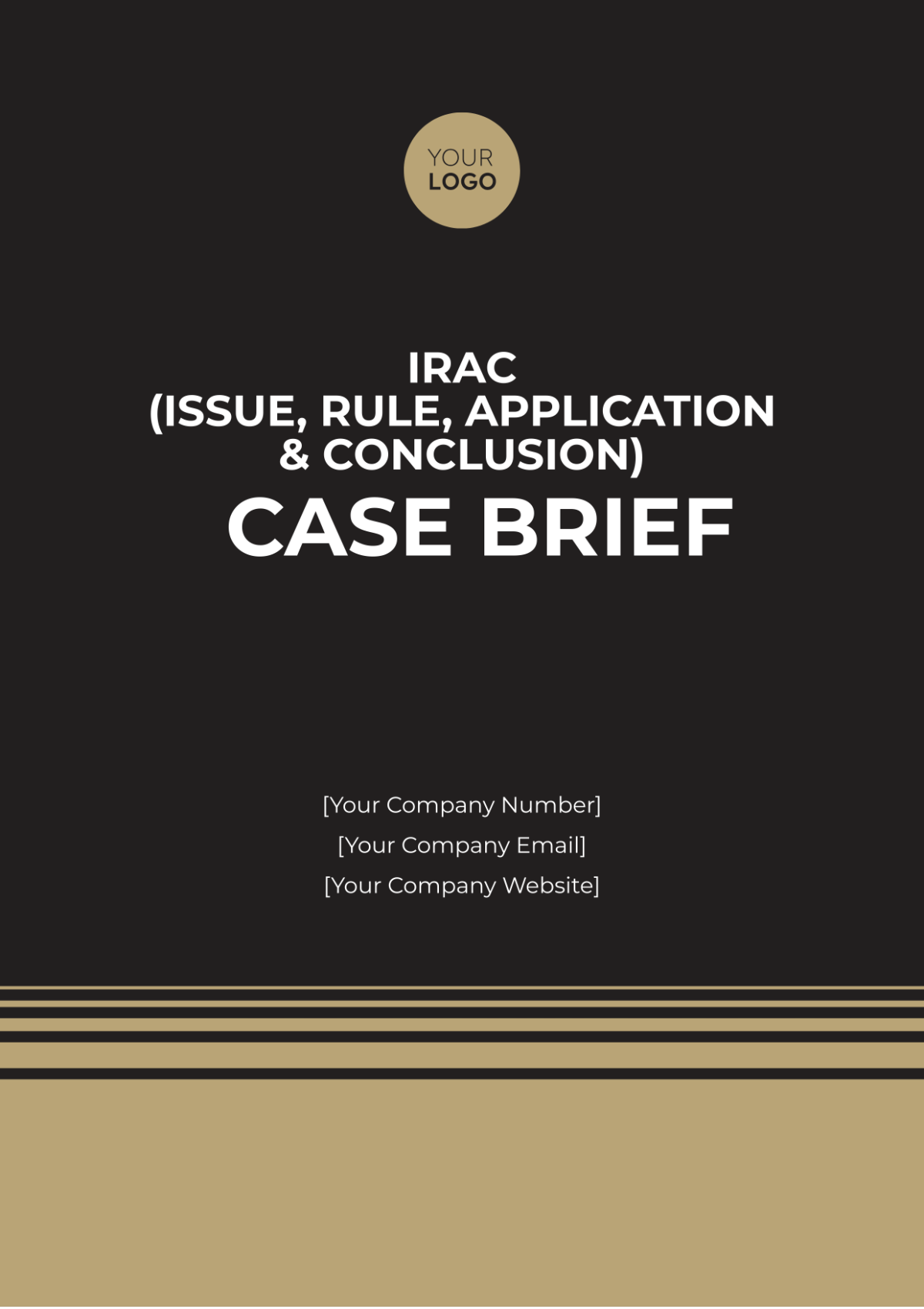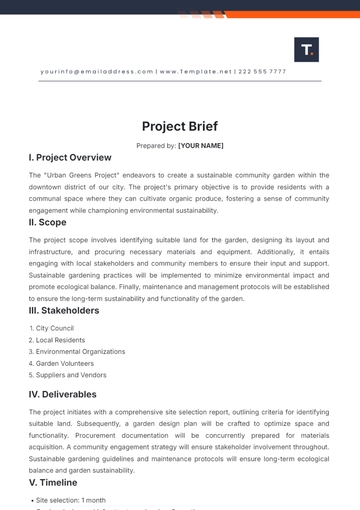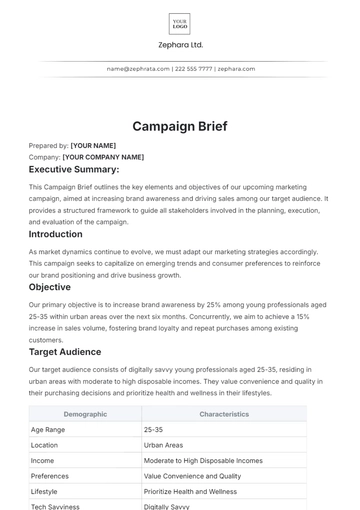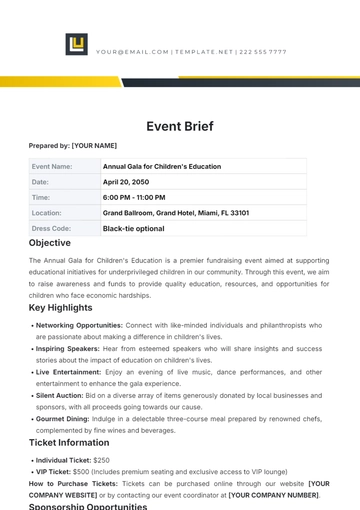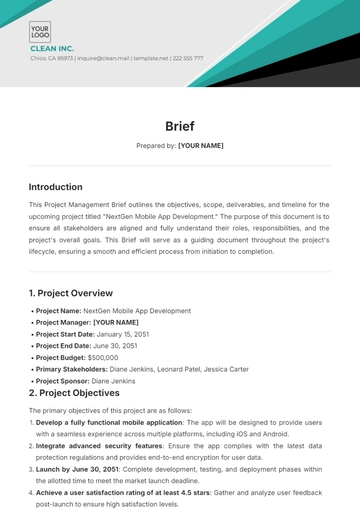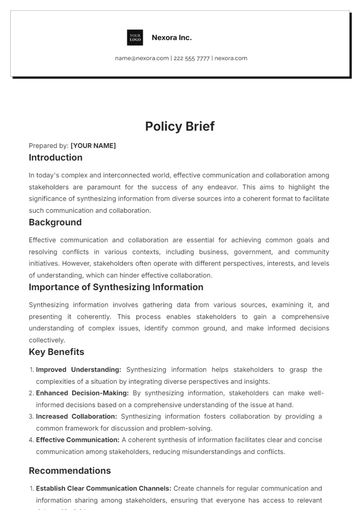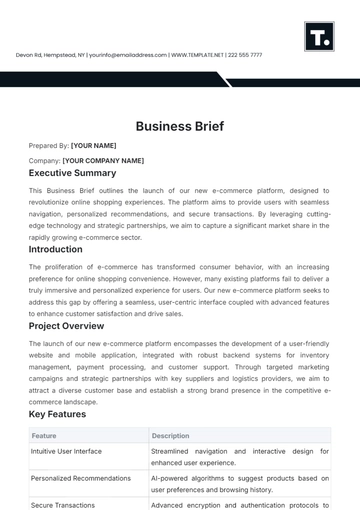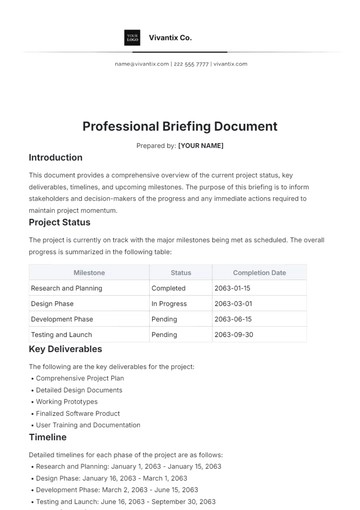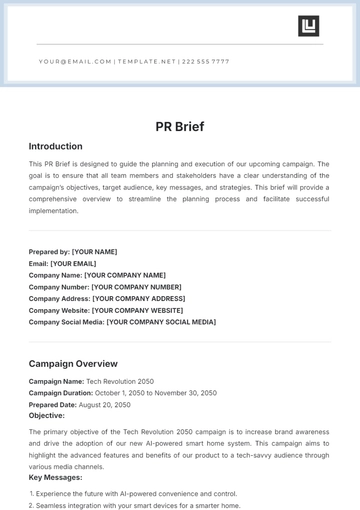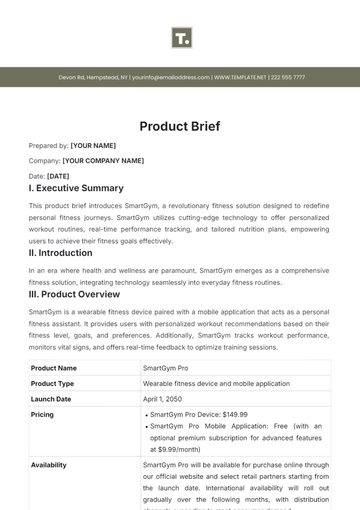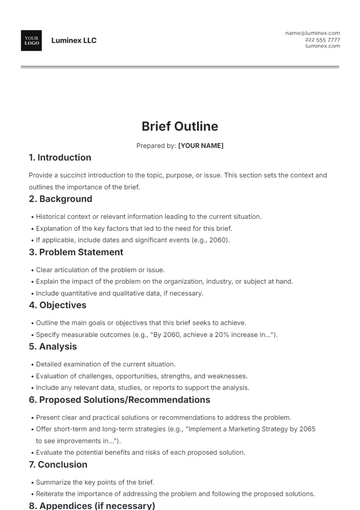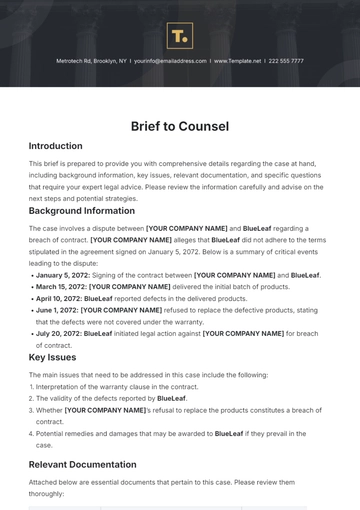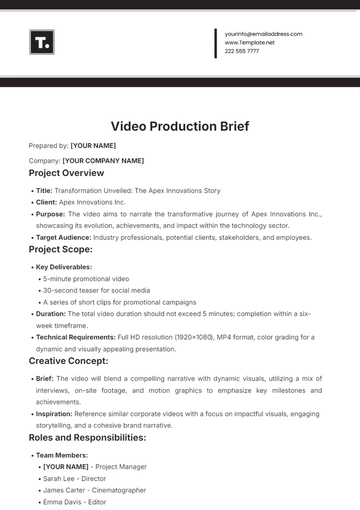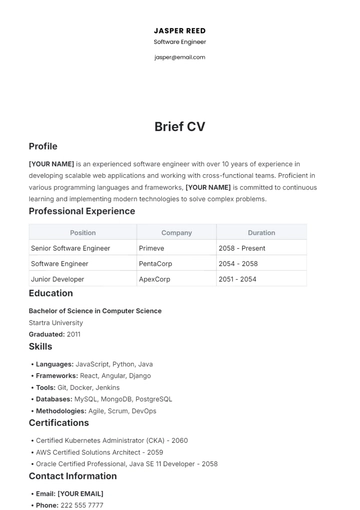IRAC (Issue, Rule, Application, and Conclusion) Case Brief
I. Case Name
[CASE NAME]
II. Issue
The issue in this case is whether the defendant's actions constituted negligence under state law.
III. Rule
The applicable legal rule is the standard of care for negligence, as established in [CASE NAME], [CASE NUMBER]. This rule states that individuals owe a duty of care to others to act as a reasonable person would under similar circumstances.
IV. Application
In this case, the plaintiff, Mr. Smith, alleges that the defendant, Mr. Jones, failed to exercise reasonable care while driving his vehicle, resulting in a rear-end collision. The facts indicate that Mr. Jones was following Mr. Smith's vehicle closely in heavy traffic when Mr. Smith suddenly braked to avoid hitting a pedestrian.
As a result, Mr. Jones collided with the rear of Mr. Smith's vehicle. Applying the standard of care for negligence, Mr. Jones had a duty to maintain a safe distance between his vehicle and the one in front of him and to be prepared to stop in case of sudden braking. However, the evidence suggests that Mr. Jones failed to keep a safe distance, which constitutes a breach of his duty of care.
V. Analysis of Precedent
Previous cases such as Johnson v. Brown and Doe v. Smith have established similar standards for determining negligence in rear-end collision cases. In Johnson v. Brown, the court held that the defendant was negligent for failing to maintain a safe distance in heavy traffic conditions. Similarly, in Doe v. Smith, the court ruled in favor of the plaintiff, finding the defendant negligent for rear-ending the plaintiff's vehicle.
VI. Counterargument
However, the defense may argue that Mr. Smith's sudden braking was unexpected and that Mr. Jones could not have reasonably anticipated the pedestrian crossing. They may also argue contributory negligence on the part of Mr. Smith for not providing adequate signals before braking. Nevertheless, even if Mr. Smith's actions were sudden, Mr. Jones still had a duty to maintain a safe following distance and exercise caution.
VII. Conclusion
Based on the application of the standard of care for negligence, analysis of precedent, and consideration of potential counterarguments to the facts of this case, it is concluded that Mr. Jones breached his duty of care and may be found liable for negligence. Mr. Smith may be entitled to damages for the injuries and damages sustained as a result of the collision.
Case Brief Templates @ Template.net
